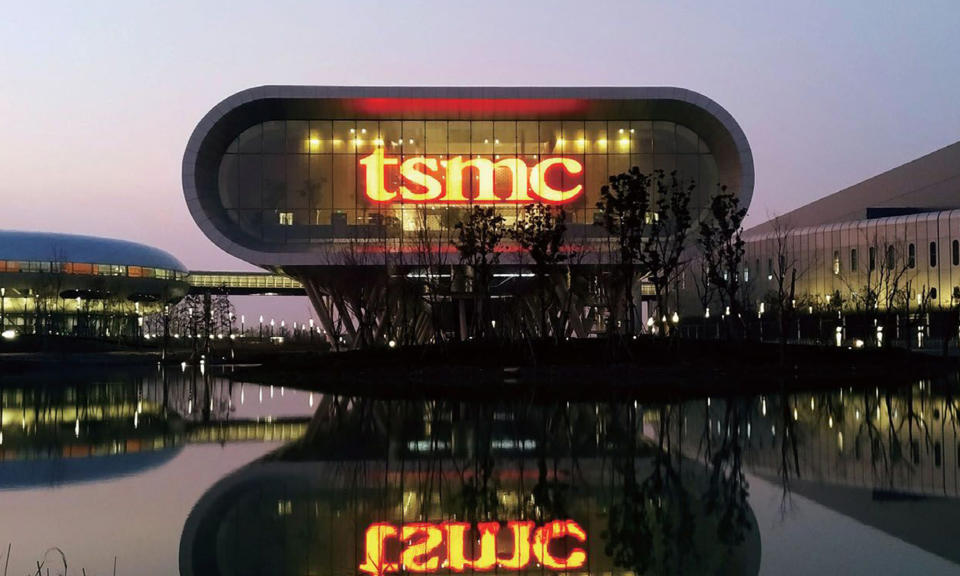.
Taiwan's semiconductors will get a huge subsidy from the US. Does this mean the stock is worth buying?

The Biden administration announced this Monday thatTaiwan Semiconductor Manufacturing Co. (NYSE: TSM)will receive up to $6.6 billion in subsidies from the federal government to support the company's plan to invest $65 billion to build three 耑 chip manufacturing plants in Arizona. While that sounds like a lot of money, the market's reaction has been muted. In the last few days of trading, the company's stock price has only risen 1%.
This reaction may make investors wonder if this agreement will make TSMC stock a buy, or if it doesn't change anything about the stock's value proposition. Let's take a closer look.
TSMC and Subsidies
The subsidy is a product of the U.S. CHIPS and Science Act, which, among other things, set aside $53 billion in federal funds to promote the construction of semiconductor plants on U.S. soil.
Washington has been pushing to expand domestic chip production because of concerns that about two-thirds of third-party chip production takes place in Taiwan. Considering China's Uiwaki invasion of Taiwan and the country's recent earthquake, any move to increase the domestic supply of 耑 chips would be more reassuring to Western governments and TSMC's customers. Previously, TSMC had committed to building two fabs in Arizona, and this deal will add a third.
In some ways, it's hard not to see the subsidy as significant. With this cash infusion, TSMC now plans to build three fabs in the Phoenix area at a total cost of $65 billion. In addition, the subsidy exceeds the $6.3 billion in revenue the company will receive in the fourth quarter of 2023.
TSMC as a company
However, the $6.6 billion is only a fraction of the $48 billion in cash and cash equivalents on TSMC's books. In addition, according to TrendForce, TSMC's wafer production in 2023 will be about 16 million wafers, accounting for 61% of all third-party chip production.
The company has indicated that it will produce approximately 600,000 wafers per year in Arizona, whereas it had planned to have only two fabs. Assuming the total capacity of the three fabs rises to about 900,000 wafers per year, that would be less than 6% of the company's current capacity, so the U.S. will likely continue to rely heavily on Taiwan as a source of advanced semiconductors.
Fortunately for shareholders, the geographic location of chip production has had little impact on TSMC's investment case. TSMC's investment case becomes even more compelling as demand for AI chips grows, which will almost certainly lead toNvidiarespond in singingAMD Increased orders from chip design companies such as
Admittedly, this growth wasn't well reflected in TSMC's financials last year. in 2023, bottom-line revenues fell 22% to $27 billion. However, analysts consistently forecast revenue growth of 22% this year and another 23% in 2025.
With these predictions in mind, investors aren't looking back. Over the past year, the semiconductor stock has risen nearly 60%, and while its price-to-earnings ratio is 28, that's based on trailing earnings. The company's outlook for revenue growth is more meaningful. With a forward P/E of 23, valuation issues are unlikely to slow the stock's growth.
Will the subsidy improve TSMC's investment prospects?
While the subsidy will reduce a large portion of TSMC's fixed costs, it is unlikely to have a significant impact on TSMC's stock. It is true that relocating some production to Taiwan allows for geographic diversification, and the subsidy allows TSMC to add more capacity in Arizona. However, since Arizona is still likely to be a relatively small part of TSMC's production, the impact on the company would be small.
Fortunately for shareholders, TSMC remains by far the leading third-party chipmaker, with the most advanced technology and the largest market share. As TSMC strives to meet the global demand for AI chips, it will be able to generate substantial returns for investors wherever it manufactures semiconductors.
Should you invest $1,000 in Semiconductor Manufacturing Corporation now?
Please consider the following before purchasing shares of Taiwan Semiconductor Manufacturing Co:
Motley Fool Stock AdvisorThe analyst team has just selected what they think is the best name for investors to buy now.10Only one stock, ...... Taiwan Semiconductor Manufacturing Company, was not included. These 10 stocks could generate huge returns in the coming years.
Consider April 15, 2005Nvidia) on the list at ...... If you invested $1,000 at the time of our referralYou will have 533,293dollar! *Stock Advisor provides investors with easy-to-use stock investment tools.
Stock AdvisorIt provides investors with an easy-to-learn blueprint for success, including guidance on building a portfolio, regular updates from analysts, and two new stock picks each month. Stock Advisor The service has contributed to the S&P 500 Index's return since 2002.translate twiceMuch*.
View these 10 stocks."
*Stock Advisor's Report as of April 8, 2024
Will Healy owns shares of Advanced Micro Devices, and the Motley Fool's positions recommend Advanced Micro Devices, Nvidia, and Taiwan Semiconductor Manufacturing Company, Ltd. The Motley Fool has a disclosure policy.
Taiwan's semiconductors will get a huge subsidy from the US. Is the stock worth buying? This post was originally published by The Motley Fool.